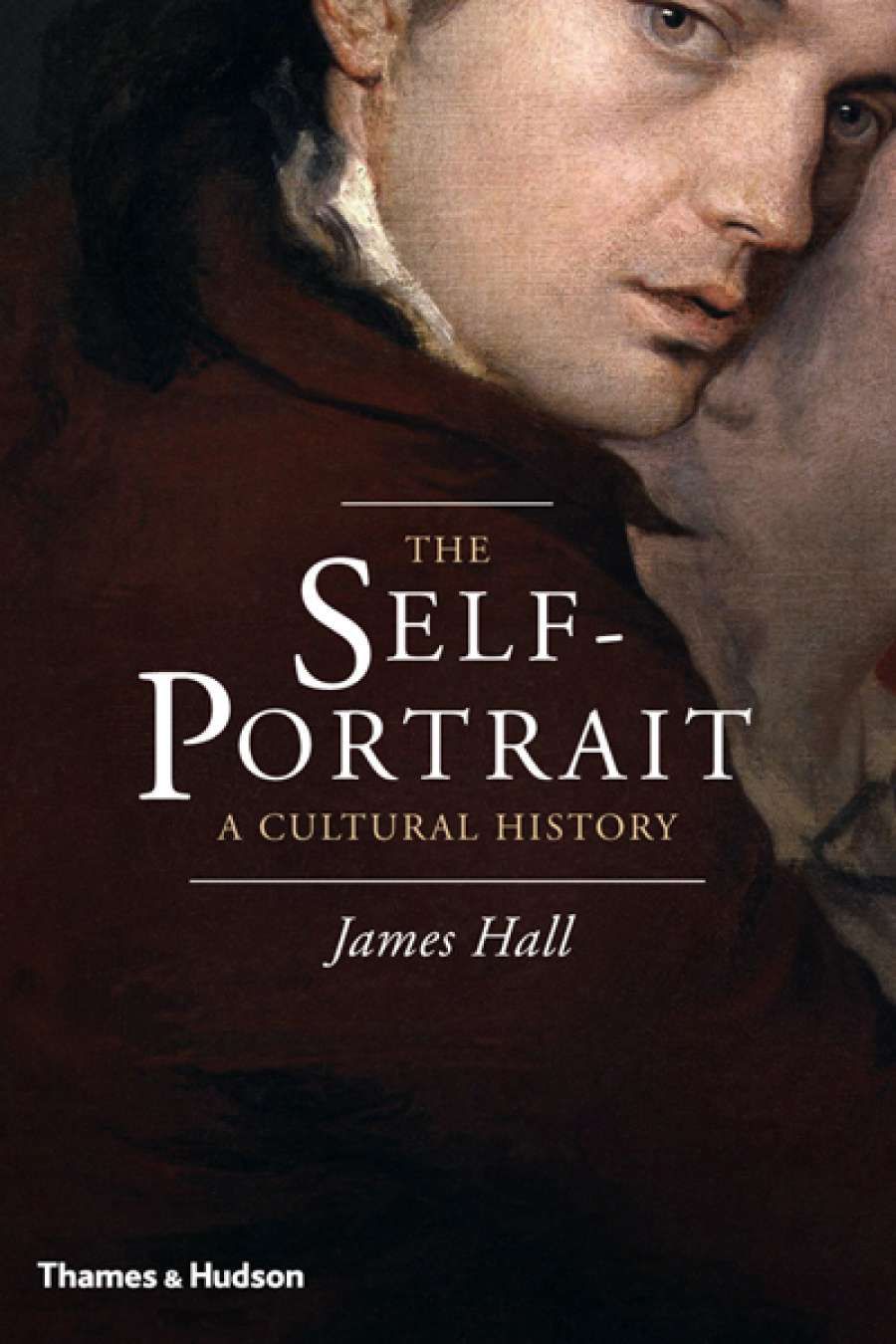
- Free Article: No
- Contents Category: Art
- Custom Article Title: Fiona Gruber reviews 'The Self-Portrait' by James Hall
- Book 1 Title: The Self-Portrait
- Book 1 Subtitle: A cultural history
- Book 1 Biblio: Thames & Hudson, £24.95 hb, 288 pp, 9780500239100
Until the Renaissance, self-portraits tended to be sly insertions. Jan van Eyck’s 1434 portrait of young Giovanni Arnolfini and his wife contains, says Hall, the most famous mirror in art, one that reflects the artist who was court painter to Philip the Good, Duke of Burgundy, alongside another, unidentified male in the convex shining circle hanging at the back of the painting.
With the Renaissance came boldness and self-obsession. Dürer celebrated his own beauty and stylishness in several youthful portraits, the 1498 self-portrait with jaunty striped cap and manly partly bared chest followed, two years later, by an image that is Christ-like in its hieratic gaze and portentously raised right hand. However, as Hall points out, Christ was never that well groomed and the art of the painter is matched by the skill of the barber, advertised in Dürer’s ‘permed hair, plucked eyebrows, waxed handlebar moustache and trimmed beard’.
If Dürer was the hero of his own works, a later generation of artists preferred the mock-heroic; Caravaggio’s 1594 self-portrait as a sick Bacchus and Michelangelo’s self-portrait as a flayed skin held up by Saint Bartholomew on the Sistine Chapel ceiling point to a greater playfulness and self-examination. The artist, having achieved high status and riches, had begun to critique his own role.
This self-absorption accompanied the growing cult of the artist; patrons now wanted not only the work of famed painters, but images of them as well. Vasari, in the 1568 second edition of his Lives of the Artists, helped create the artist as icon by including engraved self-portraits of those featured, a dubious addition but one that laid the foundation for ‘spot the artist’ games ever since. ‘In most cases self-portraits did not exist,’ writes Hall, ‘so Vasari assumed that any person looking out of a multi-figure artwork, or who looked individualized must be the artist.’
 Self-Portrait by Albrecht Dürer, 1498 (El Prado via Wikimedia Commons)
Self-Portrait by Albrecht Dürer, 1498 (El Prado via Wikimedia Commons)
Another aspect of the cult was a tendency to exaggerate the early genius of artists, with many a self-portrait suggesting infant prodigy status. Sofonisba Anguissola (c.1532–1625), one of six artist sisters from Cremona, painted several youthful self-portraits which were used by her father as calling cards to potential patrons including Phillip II of Spain, who in 1559 invited her to paint portraits at the court and give lessons to his fourteen-year-old bride, Elisabeth de Valois.
Hall’s examples mix the giants of Western art with the obscure, to good effect; he uses female examples more frequently than many similar studies, reminding us that, though few, there have been women artists who, against the odds, have won fame throughout history, from the Roman Marcia, mentioned in Giovanni Boccaccio’s fourteenth-century treatise On Famous Women, to Anne Seymour Damer, an English aristocrat and amateur whose neo-classical self-portrait bust of 1778 was made for the Uffizi collection in Florence.
‘as James Hall reminds us, artists have been experimenting with self-representation for centuries’
The crowded nineteenth-, twentieth-, and twenty-first centuries need more space than allowed in this study; revolutions, the rise of the academy, the transformation of patronage, the rise of the middle classes, sex and psychoanalysis, modernism, conceptual art and the digital age are all reflected in the self-portraiture of the last 200 years and need more than the ninety pages allotted them. But Hall manages to create a span from Realist French artist Gustave Courbet (1819–77), who points the way to the twentieth-century obsession with the self as subject and the self’s role in a critique of society, to Jeff Koons’s kitsch explorations of intimacy and mass culture in his early 1990s sculpture series ‘Made in Heaven’, which features the artist having sex with his porn star wife, La Cicciolina. In between, we have Bonnard, Munch, Van Gogh, Shiele, Kahlo, Warhol, and, the final image, Japanese artist Tatsumi Orimoto’s decade-long Art Mama photographic, video, and performance series, a study of the artist and his Alzheimer’s-afflicted mother.
While it reflects the extent to which new media has expanded the way in which the self can be explored through art, The Self-Portrait shows that humanism and humanity have always been at the heart of self-portraiture.


Comments powered by CComment